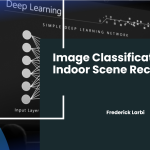The digital era is shaped by the unprecedented growth of data, influencing every aspect of our lives and redefining business, technology, and scientific exploration. Understanding how to extract value from data has become a vital skill across industries. Within this context, data analytics, data science, machine learning, and deep learning emerge as distinct but interrelated fields, each with its unique methodologies, tools, and applications. This article provides an in-depth exploration of these domains, highlighting their differences, tools, models, and real-world applications.
Data Analytics
Data analytics involves examining datasets to draw conclusions about the information they contain. It is primarily focused on processing and performing statistical analysis on existing datasets. Data analytics aims to provide actionable insights, enabling organizations to make informed decisions. The process is often divided into four main types: descriptive, diagnostic, predictive, and prescriptive analytics.
Tools and Techniques
- Tools: Common tools used in data analytics include Excel for spreadsheet analysis, SQL for database querying, and BI tools like Tableau and Power BI for visualization and reporting.
- Techniques: Techniques include data cleaning, statistical analysis, and data visualization to present findings clearly and concisely.
Models and Methodologies
- Descriptive Analytics: Involves summarizing past data to understand what has happened. Techniques include data aggregation and mining.
- Diagnostic Analytics: Explores why certain outcomes occurred. This involves more detailed analysis to discover patterns or anomalies in the data.
Applications
- Business Intelligence: Used extensively in BI to generate reports and dashboards that help in strategic planning and operational improvement.
- Customer Behavior Analysis: Helps in understanding customer preferences and trends, which can inform marketing strategies and product development.
Case Study
A retail company utilized data analytics to analyze historical sales data. By implementing descriptive analytics, they identified patterns in consumer buying behavior, allowing them to optimize inventory levels and improve customer satisfaction through targeted marketing campaigns.
Data Science
Overview
Data science is a multidisciplinary field that combines statistical analysis, computer science, and domain expertise to extract insights from large and complex datasets. It encompasses the entire data processing pipeline, from data collection and cleaning to modeling and interpretation. Data scientists use advanced machine learning algorithms to predict future outcomes and uncover hidden patterns.
Tools and Techniques
- Tools: Popular tools in data science include Python and R for data manipulation and modeling, Apache Spark for large-scale data processing, and Hadoop for distributed storage and computing.
- Techniques: Data scientists employ a variety of techniques, including regression analysis, classification, clustering, and natural language processing (NLP).
Models and Methodologies
- Predictive Analytics: Utilizes statistical models and machine learning techniques to forecast future events. Models include linear regression, decision trees, and time series analysis.
- Prescriptive Analytics: Involves recommending actions based on predictive models. It uses optimization and simulation techniques to suggest the best course of action.
Applications
- Risk Management: Data science is used in finance to assess and manage risk, through credit scoring models and fraud detection systems.
- Healthcare: In healthcare, data science helps in predicting patient outcomes, optimizing treatment plans, and improving diagnostics through image analysis.
Case Study
A financial institution leveraged data science to develop a predictive model for credit scoring. By analyzing historical financial data, they improved the accuracy of credit risk assessments, reducing default rates and enhancing customer satisfaction.
Machine Learning
Overview
Machine learning is a subset of data science focused on developing algorithms that allow computers to learn from data and make predictions or decisions without explicit programming. It automates analytical model building and enables systems to improve their performance over time.
Tools and Techniques
- Tools: Key machine learning frameworks include Scikit-Learn for basic machine learning models, TensorFlow and PyTorch for deep learning applications, and Keras for building neural networks.
- Techniques: Techniques encompass supervised learning (where models are trained on labeled data), unsupervised learning (for discovering hidden patterns), and reinforcement learning (for decision-making processes).
Models and Methodologies
- Supervised Learning: Involves training models on labeled datasets. Common models include linear regression, support vector machines (SVM), and neural networks.
- Unsupervised Learning: Used for pattern detection in unlabeled data. Techniques include clustering (e.g., k-means) and dimensionality reduction (e.g., PCA).
Applications
- Recommendation Systems: Machine learning is used to create personalized recommendations, such as Netflix’s movie suggestions or Amazon’s product recommendations.
- Fraud Detection: Employed in banking and finance to detect fraudulent transactions by identifying anomalies in transaction data.
Case Study
An e-commerce platform implemented a machine learning-based recommendation system that increased sales by 15%. By analyzing user behavior and purchase history, the system provided personalized product recommendations, enhancing customer engagement and satisfaction.
Deep Learning
Overview
Deep learning is a specialized subset of machine learning that mimics the human brain’s neural networks to process complex data representations. It involves training artificial neural networks with many layers, capable of learning high-level features from raw input data.
Tools and Techniques
- Tools: Leading deep learning frameworks include TensorFlow, Keras, and PyTorch, which facilitate building and training complex neural network architectures.
- Techniques: Deep learning techniques focus on deep neural networks, including convolutional neural networks (CNNs) for image processing and recurrent neural networks (RNNs) for sequence prediction.
Models and Methodologies
- Convolutional Neural Networks (CNNs): Used primarily in image recognition and computer vision tasks.
- Recurrent Neural Networks (RNNs): Effective for sequential data, such as time series analysis and natural language processing.
Applications
- Autonomous Vehicles: Deep learning powers the perception systems in self-driving cars, enabling them to recognize and respond to their environment.
- Natural Language Processing (NLP): Used in voice assistants like Siri and Alexa, enabling them to understand and respond to human language.
Case Study
A healthcare organization applied deep learning to improve diagnostic accuracy in radiology. By using CNNs to analyze medical images, they achieved higher precision in detecting anomalies, leading to faster and more accurate diagnoses.
Conclusion
Understanding the distinctions between data analytics, data science, machine learning, and deep learning is crucial in the modern data-driven landscape. Each field offers unique methodologies, tools, and applications that cater to different aspects of data analysis and decision-making. As industries continue to harness the power of data, professionals equipped with these skills will be at the forefront of innovation, driving significant advancements in technology, business, and science. Whether optimizing business operations, developing intelligent systems, or advancing scientific research, these fields provide the foundation for turning data into actionable insights and transformative solutions.


